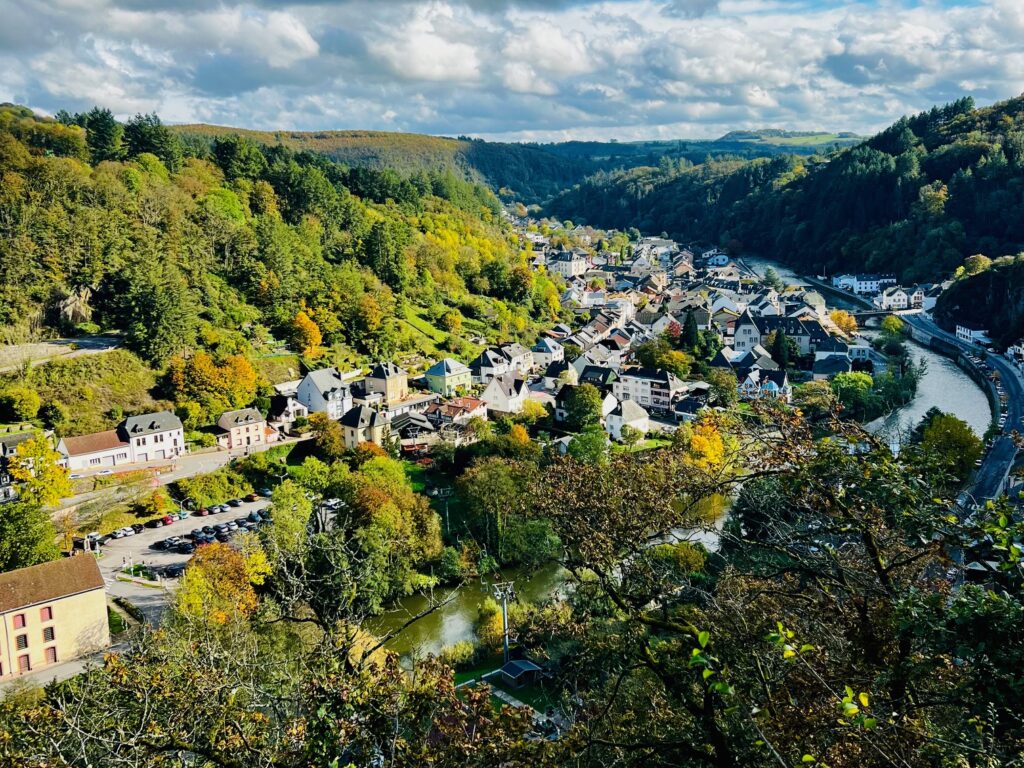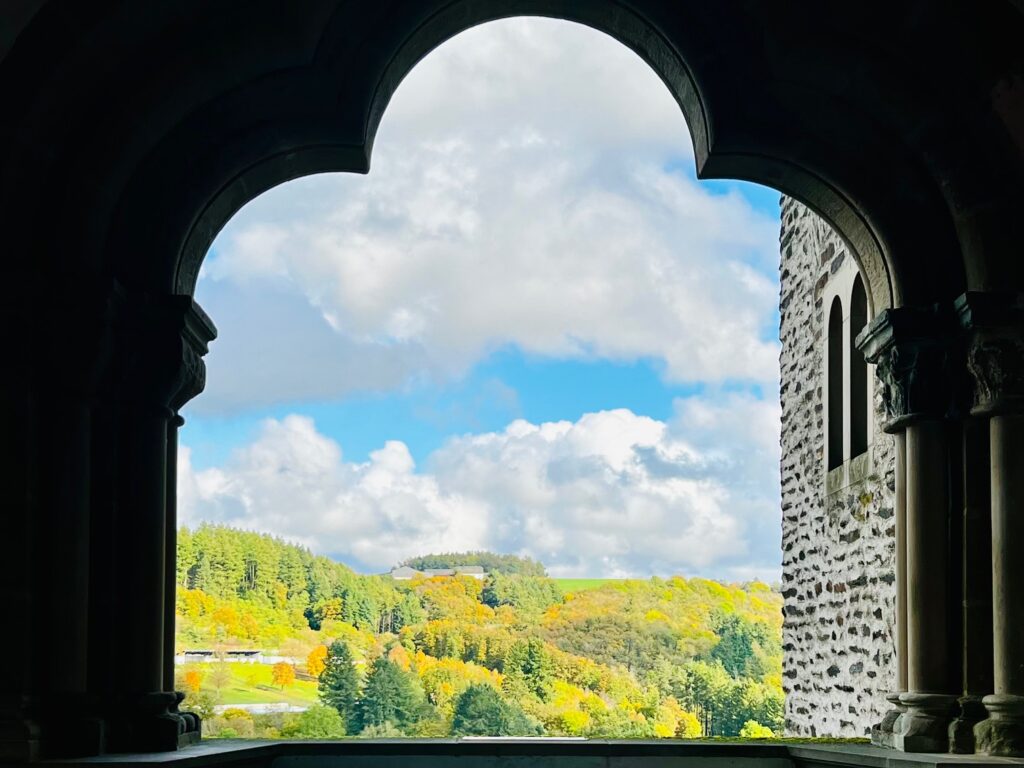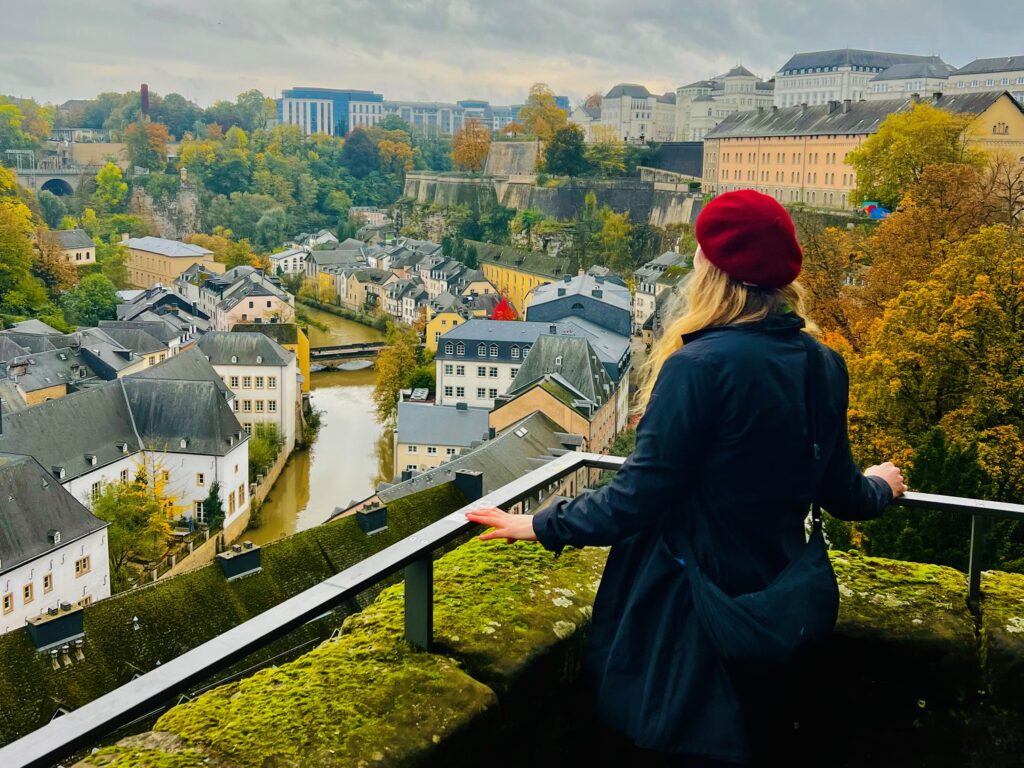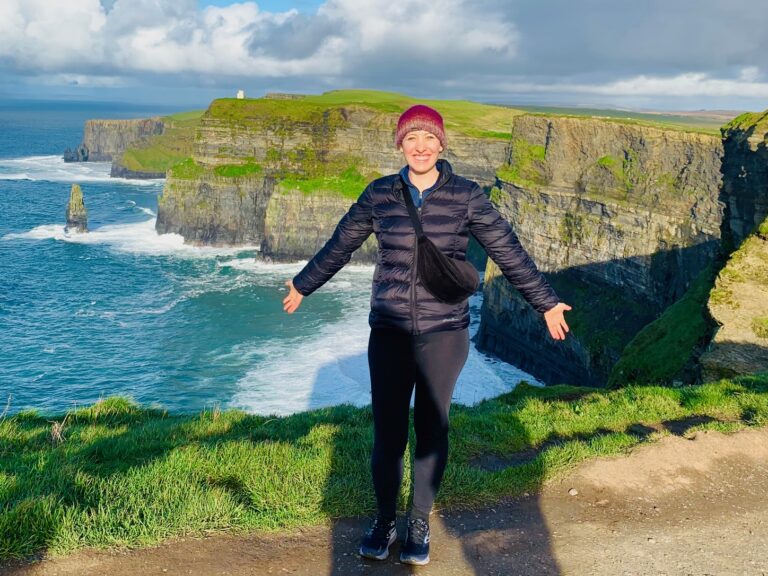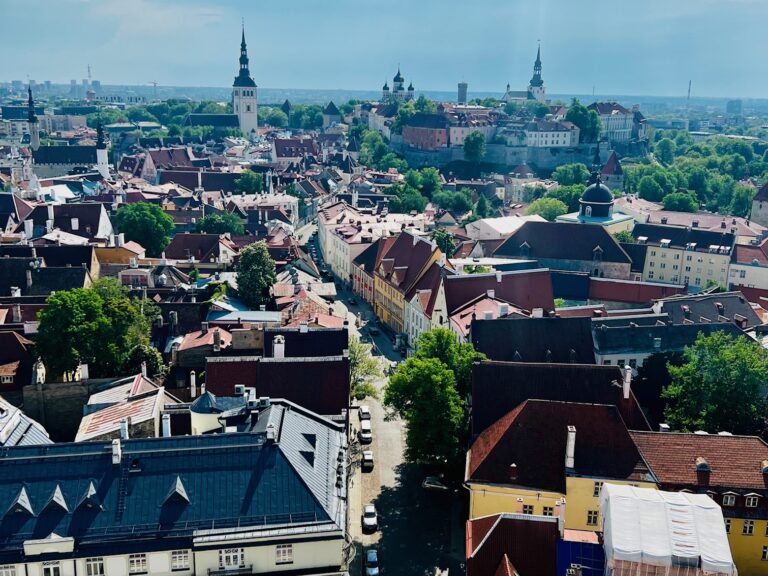From Castles to Cliffs: A Guide To Visiting Luxembourg

Luxembourg is a tiny country of 670,000 people nestled amongst Belgium, Germany, and France. It’s perhaps best known for being one of the wealthiest countries in the world with an incredibly high GDP per capita (well over $100,000 USD). Many financial institutions also have their headquarters in Luxembourg due to its favorable regulatory environment and social and economic stability.
Okay, I’m not exactly selling it, but in full transparency, when I visited Luxembourg, my expectations weren’t particularly high. Still, I was pleasantly surprised by how beautiful, safe, and easy-to-navigate this small-but-mighty country is. The capital, Luxembourg City, is lovely, with charming neighborhoods on soaring hillsides and scattered throughout river valleys. Towering stone cliffs almost seem to stand guard over the city and stone bridges crisscross the landscape.
The country has plenty of history, from harboring ancient Roman posts to being ruled by the various empires of neighboring countries (until its final independence in the late 19th century). It also has gorgeous nature with some great hiking and biking in the city and throughout the country (and it’s small, so you don’t have to travel far to get anywhere).
Lastly, in Luxembourg, all public transportation is clean, convenient, and FREE. The country made all public transit free in 2020 and it’s truly a traveler’s dream – no worrying about buying tickets or validating them. You can just hop on buses, funiculars, public elevators, or trains and enjoy the ride.
I only spent a couple of days in Luxembourg, but I enjoyed my time there. Here are some of the top sights to see when visiting this charming country.
Top 10 Sights To See in Luxembourg
1. Venture into the medieval magic of Vianden Castle: This beautiful medieval castle is about 90 minutes via (free) public transit from Luxembourg City. It was restored in the 1970s after falling into ruin and has quite the storied history: it was a small Roman fortress as far back as the 3rd or 4th century AD before becoming the home of various royal families.
The castle’s structure evolved and was built out over hundreds of years. When I visited, I thought the self-guided tour of the inside of the castle was perfectly fine – you can learn about its history, check out some of the older ruins, and see fairly-kitschy decorated rooms that give you a sense of the medieval times. However, it’s the surrounding area that truly steals the show – the views from the castle of rolling hills and the charming town of Vianden are straight out of a fairytale.
I recommend a quick stop at the castle’s visitor center to watch the ~10-minute video on the history and evolution of the castle and to check out the exhibits built around some of the oldest remaining ruins. Along with seeing the castle, you can walk around the little town of Vianden. There’s also a cable car nearby with great views of the surrounding area. Pro tip: Sit on the left side of the train heading out of Luxembourg City and the right side of the bus to Vianden for the best vistas (and the opposite heading back).
2. Wander the historic underground stone passageways at Casemates du Bock: These old casemates are carved throughout the towering stone cliffs in Luxembourg City. Built starting in the 17th century, these fortifications once housed kilometers of underground tunnels and defended the city from various invaders, served as jail cells and living quarters for soldiers, and even sheltered 35,000 locals during World War II.
I really enjoyed exploring the stone passageways, which felt like a dark and ancient maze from another time. The casemates also offer incredible views of the city and its surrounding area. A visit is 45 minutes (60 minutes if you take a guided tour) and is best done when the weather is decent for optimal views. The casemates are located in the center of the city and closed during the winter months.

3. Take in the scenic vistas along the charming Chemin de la Corniche: Called “Europe’s most beautiful balcony,” this elevated walkway offers stunning views overlooking the Grund neighborhood and the Alzette Valley. It’s a popular place for strolling, taking photos, and gazing out over the city. It’s a few minutes’ walk from the city center and best enjoyed when the weather is decent.
4. Explore Ville Haute, Luxembourg City’s historic center: Luxemburg City’s central area is pretty, small, and easily walkable. The main square is Place Guillaume II, which is a fairly standard city plaza near some historic buildings like the Palais Grand-Ducal (official residence of the grand duke of Luxembourg) and Notre Dame Cathedral. Grand Rue street and the surrounding area has some nice shops, restaurants, and cafes. There are also some lovely statues, churches, and charming viewpoints if you stroll around. After making my way through the city center, I had tea and cake at Kaale Kaffi, an eclectic and artsy cafe that’s a great place to take a break.
5. Admire the panoramic vistas from the Pfaffenthal Panoramic Elevator: This (free) glass elevator is used by local residents to get up and down the towering cliffs in the city, but it’s also a draw for tourists with its sweeping panoramic views. You can take it up or down (I recommend doing both at least once). It’s about a 10-minute walk from the city center and once you take it down, it’s a good starting point to explore the lower part of Luxembourg, including neighborhoods like Pfaffenthal and Grund.

6. Explore the lower part of Luxembourg City: The main city center is located at the top of Luxembourg City’s dramatic stone cliffs, but also be sure to make your way down (via free bus, elevator, or walking) to the neighborhoods in the river valleys below. One of the most popular is the neighborhood of Grund with a lovely area where you can walk along the river (with a statue of Melusina, the legendary mermaid), the Wenzel Circular Walk (see below for more information on this walk through the historic parts of the city), and charming buildings such as Neumünster Abbey.

7. Take a (steep) stroll through a thousand years of city history on the Wenzel Circular Walk: This steep and stair-filled 5.5 km (3.4 mile) walk takes you through some of the oldest quarters and fortifications in Luxembourg City. Start at Bock Promontory, head to the Chemin de la Corniche, and follow the Wenzel signs from there (there are mixed reviews on how well the walk is marked). The tour ends in the lower part of Luxembourg in the district of Grund. The walk can be self-guided or you can book a guided tour at the Luxembourg City Tourist Office.
8. Hike, walk or bike through breathtaking nature: Luxembourg has some great hiking, walking, and mountain biking paths in the city and throughout the country. In Luxembourg City, along with the more urban and historic Wenzel Circular Walk and Vauban Circular Walk, you can visit Pétrusse Parks, a charming public park in the center of the city.
Luxembourg also has long hiking trails that extend across neighboring countries like Belgium and Germany. Some popular trails include: Escapardenne Lee and Eisleck Trails, Mullerthal Trail, Valley of the Seven Castles, Moselle-3 Trail, Minett Trail, and Dream Loops. For the history buffs out there, you can take the Liberation Route Europe, which runs through the entirety of Luxembourg and commemorates Europe’s liberation from occupation in World War II. Since these hikes are quite long, you can do portions of them depending on the time and distance you want to go.
Luxembourg also has plenty of options for cyclists with 600 kilometers of biking routes and 700 kilometers of mountain biking routes.
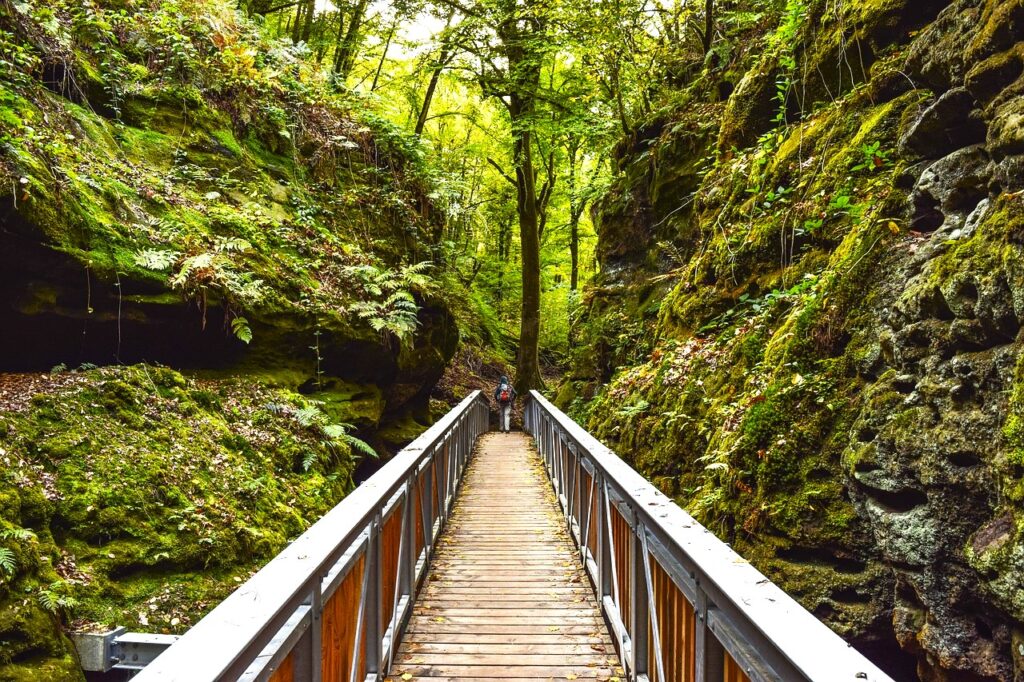
9. Check out the museums in the “MuseumSmile”: I didn’t go to any museums when I was there, but Luxembourg City has what is called the “MuseumSmile,” an arched, smile-like mile that includes seven museums in the city:
- Luxembourg City Art Museum (multiple centuries of European and Luxembourgish art)
- Casino Luxembourg (contemporary art)
- Lëtzebuerg City Museum (Luxembourg City history)
- Nationalmusée um Fëschmaart (archeology, history, and art)
- National Museum of Natural History (earth and nature exhibits)
- Musée Dräi Eechelen (Luxembourg’s history in an 19th century fort)
- Mudam Luxembourg (modern art)
10. Marvel at more magnificent castles: For such a small country, Luxembourg has a fair number of castles (~50 of them). Along with Vianden Castle, the most popular castle to visit in the country, others to check out include Bourscheid Castle, Beaufort Castle, and Larochette Castle.
Luxembourg is well-worth adding to your Euro itinerary. Spend a few days hopping on (free) public transit and getting to know the history, nature, and culture of this charming little country.
Doing a Euro tour? Check out my blog posts on the best saunas in Helsinki and the top sights to see in Stockholm, Sweden, Copenhagen, Denmark, and Tallinn, Estonia.


